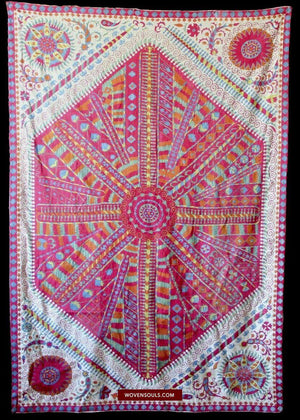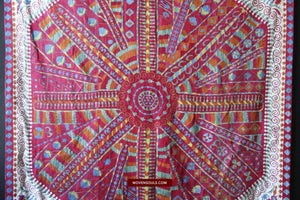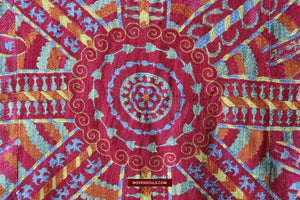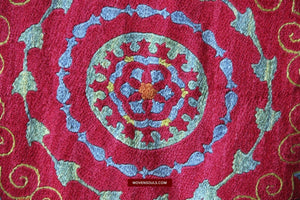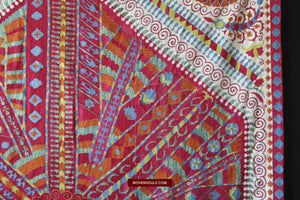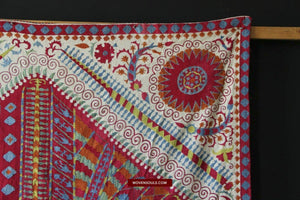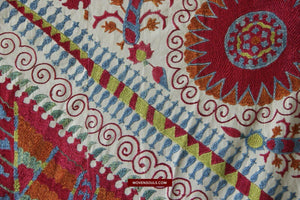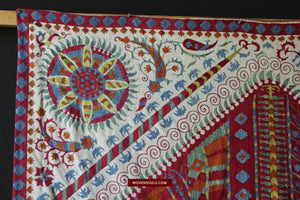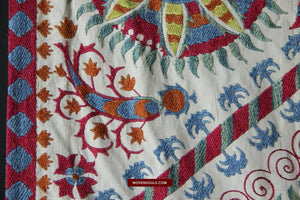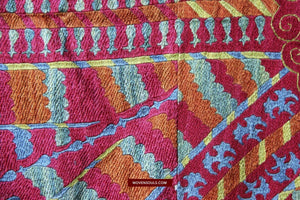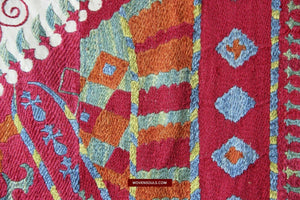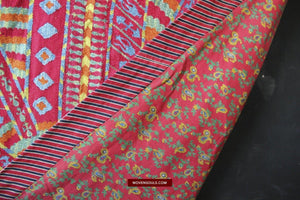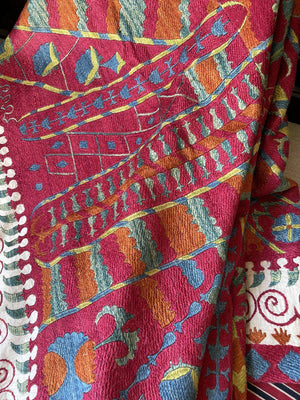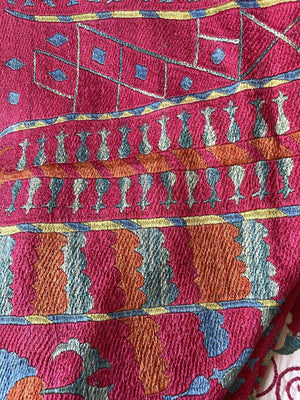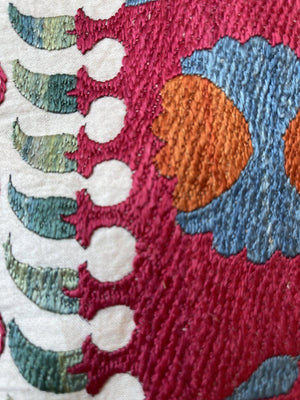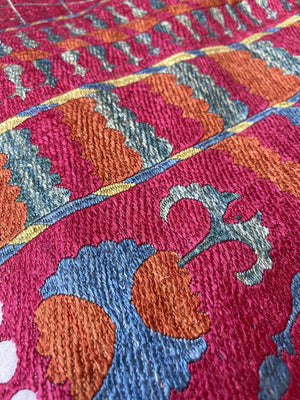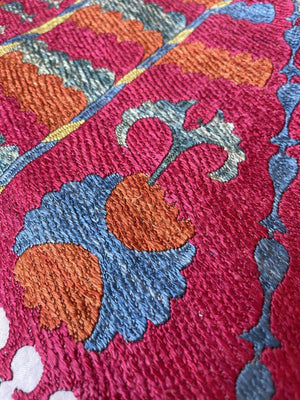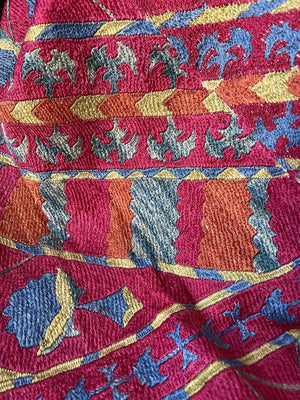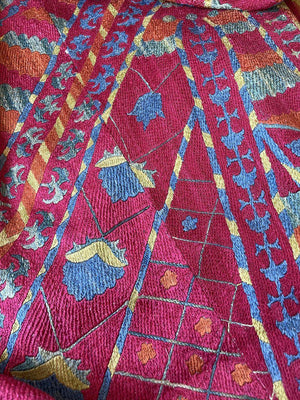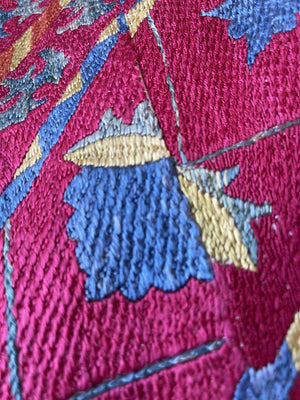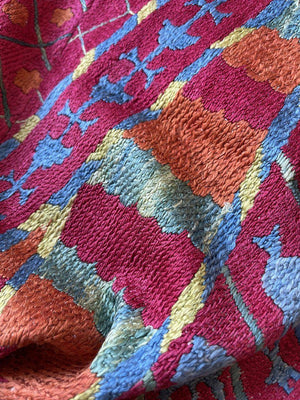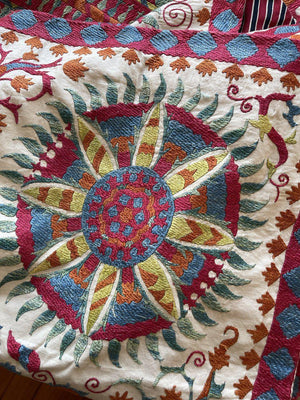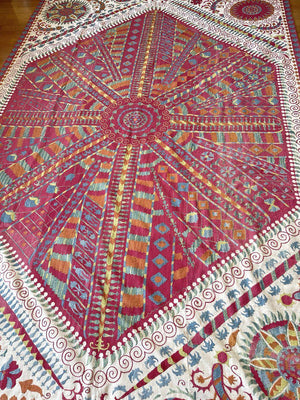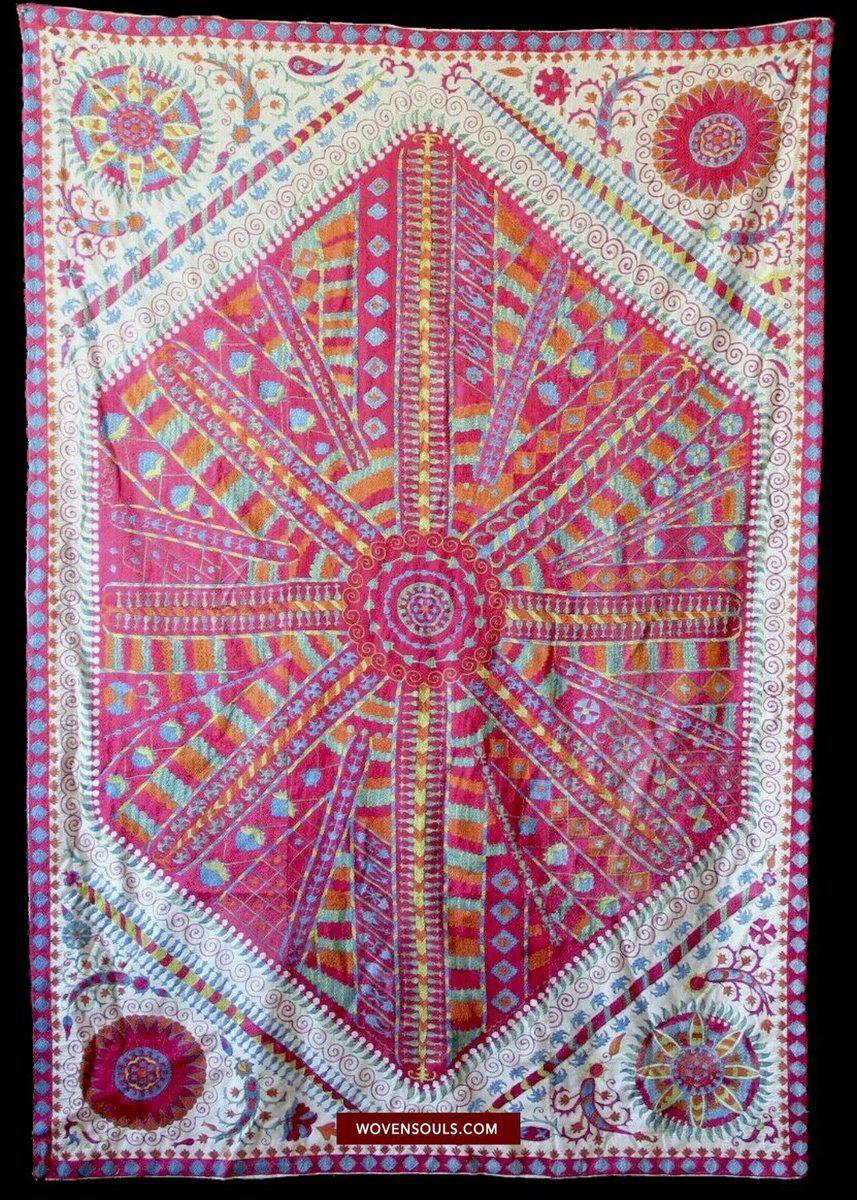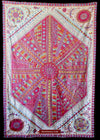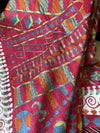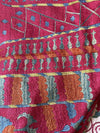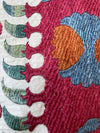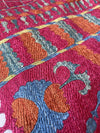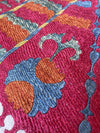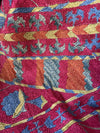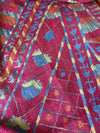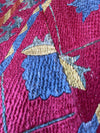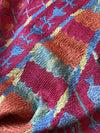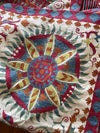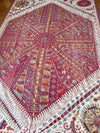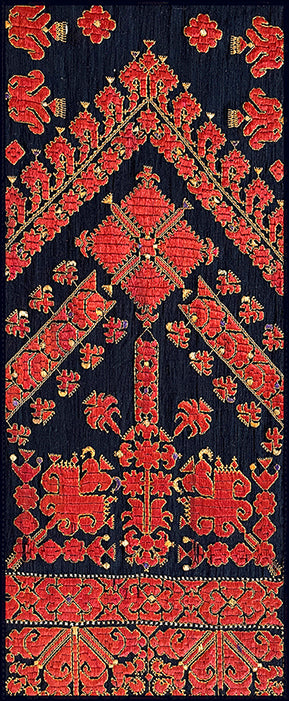Your Cart is Empty
1492 Old Large-Medallion Suzani
Large-Medallion Suzani from Bukhara
Traditional Silk Embroidery on Cotton
Called the 'Large Medallion' Suzani - this pattern is not common
The medallion fills the field almost entirely and is closely worked with different designs and contrasting shades of silk.
Striking Layout and very well executed work.
Lined with a block printed cotton sheet
5'1" x 7'4" or 154 x 223cm.
This piece is not antique but will one day accumulate its own history and become a precious heirloom.
Currently there are only 66 known antique Large Medallion Suzanis and of these, 23 have a large hexagonal central medallion like this one.
Exact age unknown - probably from pre 2000
***
From the description of a book devoted to Large Medallion Suzanis "The Great Embroideries of Bukhara"
Suzanis are among the most beautiful objects known from the high period of the art of needlework in the former Central Asian Emirates of Bukhara and Kokand, the areas known today as the Republics of Uzbekistan and Tajikistan.
They are known as 'suzani', derived from the Farsi word for 'needle' and the tradition continued into the early twentieth century. Each embroidery formed part of a suite made by a bride and her family as dowry gifts. It is impossible to say exactly who created these embroideries, because many different tribes lived in the region, but it was probably settled societies rather than nomads. These extraordinary works of art are distinguished by their huge central medallions, which provide an explosion of colour and form. Many of them are amongst the largest suzani extant, and the effect that they create is of an extremely powerful and graphic artistic image.
***
Link to a note on Large Medallion Suzanis
***
This item has spent awhile being used for the purpose of its creation with the original artist/user. Signs of this life lived heartily may be present on the piece in the form of stains, thread loss, loose threads, holes, tears, color run and other imperfections. Therefore the condition must be assumed to be “not” perfect. More photos of such imperfections will be provided on request.
***
Like it? Share it with friends on Facebook!
.......................................................................................................................
























